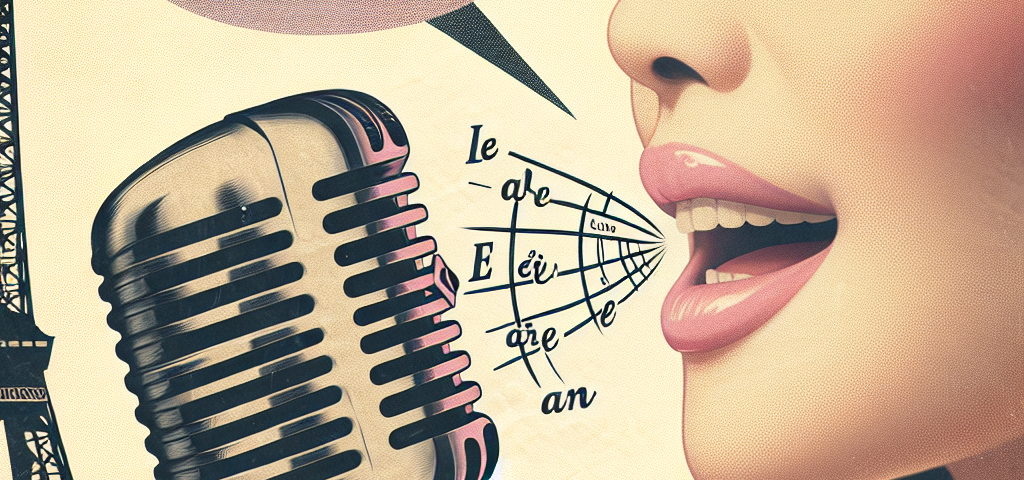
Speak Like a Pro: French Idioms to Boost Your GCSE Performance
May 28, 2025
Chit Chat in French: Fun Phrases for Casual Conversations
May 28, 2025
French, often lauded for its melodic and flowing nature, can be a challenge for non-native speakers, particularly when it comes to pronunciation. Understanding phonetics—the study of sounds—can significantly enhance your ability to communicate effectively and authentically in French. This article explores fundamental phonetic concepts, common pitfalls, and practical tips for pronouncing French words like a native speaker.
The Basics of French Phonetics
1. French Vowel Sounds
French features several distinct vowel sounds that may not exist in English. Here are some key points:
-
Nasal Vowels: French has nasalized vowels, which occur when air escapes through the nose. Examples include:
- [ɑ̃] as in brin (blade)
- [ɛ̃] as in pain (bread)
-
Closed and Open Vowels: French vowels can be open or closed, impacting their quality. For instance, the vowel é in été (summer) is pronounced [e], while è in très (very) is [ɛ].
- Diphthongs: Unlike English, French diphthongs are relatively rare, and most vowels are pronounced distinctly without gliding.
2. Consonant Sounds
French consonant sounds may also differ significantly from English:
-
The French ‘R’: A common stumbling block for learners, the French ‘R’ is typically a guttural sound produced at the back of the throat. It differs from the English ‘R’ and requires practice to master.
- Consonant Liaison: In spoken French, certain consonants are pronounced at the end of a word when the next word begins with a vowel sound. For example:
- les amis is pronounced as [lez‿ami].
3. The Influence of Accents
French is often marked by accents that can change the pronunciation of vowels significantly:
- Acute Accent (é): Makes the vowel sound closed, as in café.
- Grave Accent (è): Indicates an open sound, as in bère.
- Circumflex (â, ê, î, ô, û): Can denote a change in pronunciation and sometimes a historic letter.
Common Pronunciation Pitfalls
1. Silent Letters
French has many silent letters, particularly at the end of words. For instance, the final t in voit (he/she sees) is not pronounced, making it [vwa].
2. Vowel Combinations
Vowel combinations can be tricky. It’s crucial to learn which vowels are often pronounced together and how they blend (or don’t). For example, ou in fou (crazy) sounds like [u], while oi in boit (drinks) sounds like [wa].
3. Syllable Stress
Unlike English, where stress can vary greatly from word to word, French tends to place stress on the final syllable of phrases. Paying attention to syllable stress can help you sound more fluent and natural.
Practical Tips for Mastering French Pronunciation
1. Listening and Imitation
Immerse yourself in the language by listening to native speakers. Mimicking their pronunciation and intonation can help you internalize the sounds of French.
2. Phonetic Transcriptions
Utilize phonetic transcriptions to understand how to pronounce difficult words. Resources like the International Phonetic Alphabet (IPA) can be invaluable.
3. Practice with Tongue Twisters
Engaging in tongue twisters can help you practice difficult sounds and improve your overall fluency. For example:
- Un chasseur sachant chasser sait chasser sans son chien.
4. Use Technology
Leverage language learning apps, websites, and online dictionaries that provide audio pronunciations. Regularly practicing with these tools reinforces your learning.
5. Apply in Context
Practice speaking with native speakers whenever possible. Language exchange partners, tutors, or immersion programs can provide feedback that is essential for honing your pronunciation.
Conclusion
Mastering phonetics is essential for anyone looking to sound more like a native French speaker. By understanding the intricacies of vowel and consonant sounds, recognizing common pitfalls, and actively practicing pronunciation, you’ll navigate the phonetic landscape of the French language with confidence. Embrace the challenge—each step toward fluency is a step toward a richer connection with the language and its culture. Happy learning!

